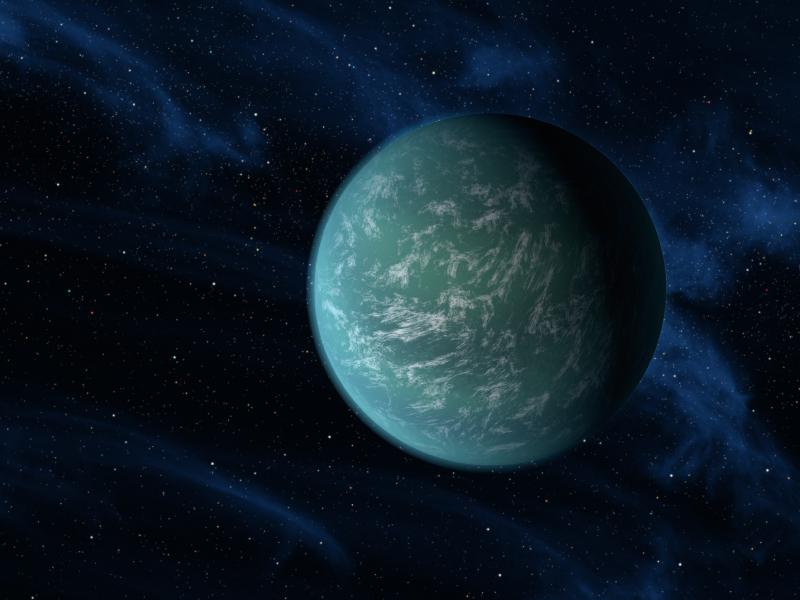Science News
Kepler 22b - Habitable?
December 5, 2011

Wow! Did the Kepler conference open to exciting news!
This morning, NASA announced the confirmation of an exoplanet in its star’s habitable zone—the region around a star where liquid water, and life, could potentially exist on an Earth-sized planet.
The newly confirmed planet, Kepler-22b, is the smallest yet found to orbit in the middle of the habitable zone of a star similar to our sun. The planet has a radius about 2.4 times that of Earth. Scientists don’t yet know if Kepler-22b has a predominantly rocky, gaseous, or liquid composition, but its discovery brings us one step closer to finding Earth-like planets.
Previous research hinted at the existence of near-Earth-size planets in habitable zones, but clear confirmation proved elusive. Two other small planets orbiting stars smaller and cooler than our sun recently were confirmed on the very edges of their habitable zones, with orbits more closely resembling those of Venus and Mars.
Kepler discovers planets and planet candidates by measuring dips in the brightness of more than 150,000 stars to search for planets that cross in front, or “transit,” the stars. Kepler requires at least three transits to verify a signal as a planet.
“Fortune smiled upon us with the detection of this planet,” says Bill Borucki, Kepler principal investigator at NASA Ames Research Center, who led the team that discovered Kepler-22b. “The first transit was captured just three days after we declared the spacecraft operationally ready. We witnessed the defining third transit over the 2010 holiday season.”
In addition, the Kepler science team uses ground-based telescopes and the Spitzer Space Telescope to confirm planet candidates the spacecraft finds. In this case, Spitzer’s infrared instruments confirmed the new exoplanet’s existence.
Kepler-22b lies 600 light years away from Earth. While the planet is larger than Earth, its orbit of 290 days around a sun-like star resembles that of our world. The planet’s host star belongs to the same class as our sun, called G-type, albeit slightly smaller and cooler.
Of the 54 habitable zone planet candidates reported in February 2011, Kepler-22b is the first to be confirmed. This milestone will be published in the Astrophysical Journal.
The confirmation also provided our friends at SETI with very good news today. As of 6:18 a.m., SETI received renewed funding for its Allan Telescope Array, specifically to target Kepler’s discoveries, like Kepler-22b. From a SETI press release:
“This is a superb opportunity for SETI observations,” said Jill Tarter, the Director of the Center for SETI Research at the SETI Institute. “For the first time, we can point our telescopes at stars, and know that those stars actually host planetary systems—including at least one that begins to approximate an Earth analog in the habitable zone around its host star. That’s the type of world that might be home to a civilization capable of building radio transmitters.”